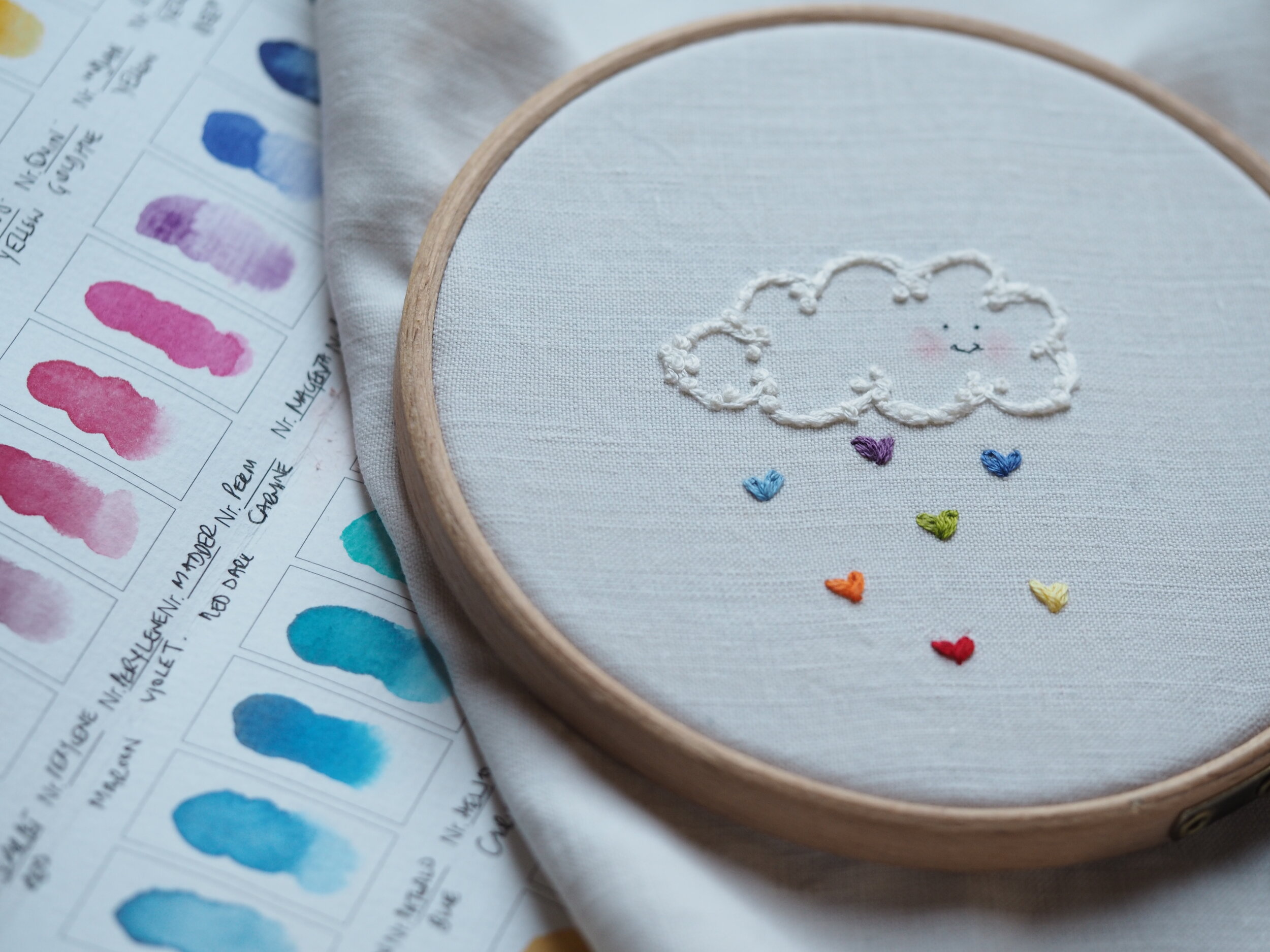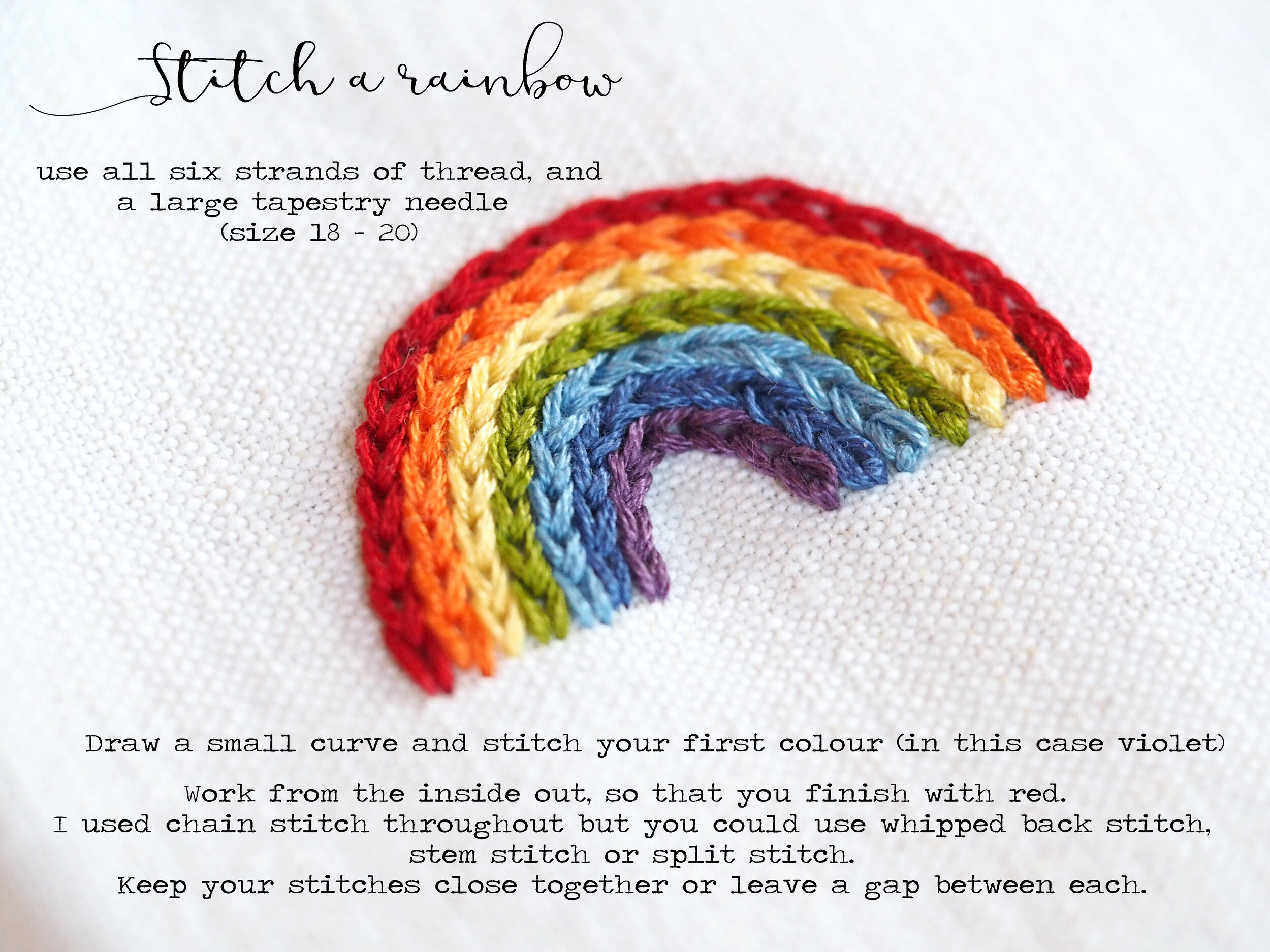Rainbow colours are not my thing, usually. Since the onset of social distancing, though, the rainbows in windows have brought a warmth to my heart that I can’t really explain. Just to know that there is a little family indoors, staying snug and keeping safe makes me happy. Just a small gesture of reaching out, saying hi to your neighbours and the delivery men, postmen and volunteers who are keeping the country going… I love it.
There’s really only Drew and me with our little dog behind the thick stone walls of this old cottage but I wanted to make my own version of a little rainbow for linen hearts to hang on the woodshed, the front door and pop up in the window. As I stitched I thought that perhaps my nieces might like to do a few cute stitching projects (they love rainbows) which led me to thinking that the children in your lives might like a little project or two, too.
I am plodding through a lot of work at the moment and finding it really difficult to concentrate on anything. These easy little rainbow motifs have been fun to stitch, very quick to finish and as I work I feel as though I am recording a very small moment in social history.
I’ve put a little Spring worksheet together with a few stitching ideas that can be adapted to suit any age. Keeping the motifs tiny with lots of white space around will keep the designs more appealing for grown ups but drawing the designs larger, filling with colouring pencils and stitching thick outlines will be fun for small children too. Feel free to use the ideas and stitching however you like and do share on social media if you can. I would love to see if any children are having a go!
I feel fortunate that my little business is able to carry on throughout this difficult time and I am very aware that others have either lost jobs or found themselves furloughed with less money than usual. With this in mind, I am trying to create a few little free downloads with some stitching ideas and motifs to keep you going, but I have to do this in my spare time and it takes a while for me to faff with getting them done digitally so please bear with me. I will try to upload one little sheet a week as we go through this and I hope they come in useful.
You can download the first freebie here. The rainbow is very simple to work - I have added the (very minimal!) instructions below.
Wishing you happy stitching with lots of love
Nicki













